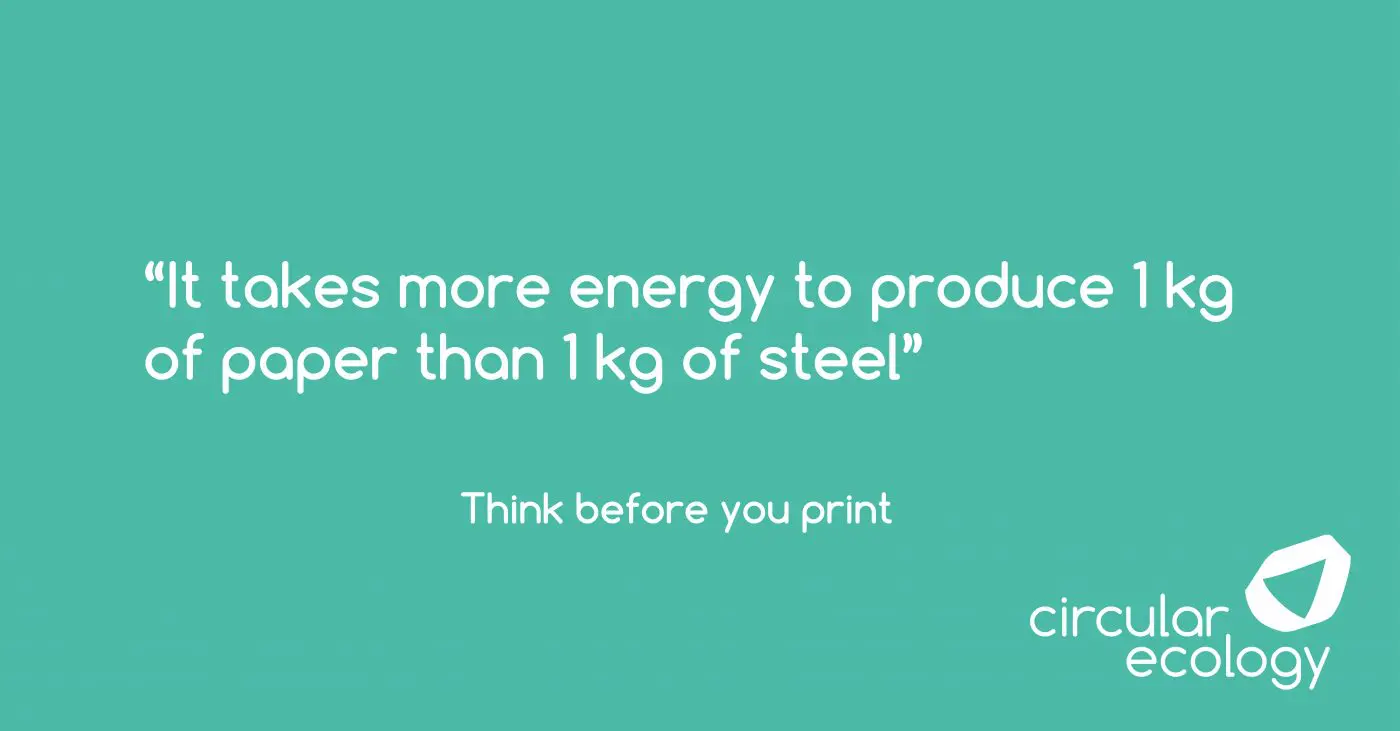Blog, Food, Sustainability, Waste
Have a Very Green Christmas
For many people, Christmas is a time of joy and celebration, for sharing gifts and feasting with family and friends. It’s certainly a lavish time of year, so here at Circular Ecology we have put together a few simple tips to help you enjoy a greener Christmas:
Christmas Tree
There is often the question of if it is more environmentally conscious to get a real Christmas tree or an artificial one. The BBC have put together a helpful guide on several different factors to consider when making this choice.
There are estimates which state that you would need to use an artificial tree for “more than a decade” for its carbon footprint to be lower than that of a real tree. So, if you want to have an artificial tree, purchasing one of good quality that you will use for many years is our recommendation. If you want to have a real tree, the BBC guide gives some great details on renting them for a greener Christmas.
Some other great sustainable Christmas tree tips:
- For real trees, those that are slow grown and use no fertilizer are preferable to those intensively grown. Check to see if it is certified by the Forest Stewardship Council, which ensures minimal fertiliser is used.
- Potted trees (with roots) are able to be re-used, spreading the carbon footprint over multiple years and potentially avoiding transport emissions, making them a more sustainable option if you’re after a real Christmas tree.
- Re-use the stand or pot you buy for your real tree for as many years as possible – buying a new one each year has a significant impact on the footprint of your tree.
Christmas Cards
About 150 million Christmas cards and parcels are delivered by Royal Mail in the run up to Christmas. A report from the University of Exeter found that the most appropriate estimate of the carbon footprint of a typical greetings card is 140 gCO2e. However, this figure is based on a 10g letter, and a typical greetings card weighs 30g. Meaning that this 140 gCO2e could be significantly higher. When millions of cards are being sent, the carbon emissions of Christmas cards can be significant each year.
As well as this, most cards are thrown away and many cannot be recycled due to decorative features such as glitter or foil. Avoiding sending dozens of Christmas cards could save time, money, and carbon every year.
If you want to reduce the impact of sending cards, consider using e-card providers as an alternative.
Christmas Clothing
The carbon emissions of fast fashion have been a hot topic over the last few years. Seasonal clothing such as Christmas jumpers and pyjamas can contribute to this problem. This is especially the case for children’s clothes as they are likely to be too small the following year.
In 2019, the BBC reported that 95% of high street Christmas jumpers are wholly or partly made of plastic materials which can cause microplastics to get into water streams when washed. In 2016, a study by Plymouth University found that acrylic was responsible for releasing nearly 730,000 microfibres per wash – five times more than polyester-cotton blend fabric, and nearly 1.5 times as many as pure polyester.
Buying second hand for items that get little use is ideal to reduce carbon and cost. Because they are worn for only short periods of time, second hand Christmas jumpers are usually in great condition. Re-wear, buy pre-loved, swap, and donate for a greener Christmas.
Christmas Travel
Over the festive period, there will be a lot of travel between different households for celebrations. There are ways to reduce the carbon emissions from Christmas travel such as avoiding using a car by going by train or coach. Or looking at if it’s possible to lift share with someone.
If you do have to travel by car, the following list from Green Choices can help reduce emissions and fuel costs.
- Remove any unnecessary roof racks or roof boxes to reduce weight and drag
- Clear out anything that you won’t need to remove extra weight from the car
- Drive smoothly to reduce excessive braking and accelerating
- Higher gears are more fuel efficient so move up gears as soon as you can
- Combine journeys/errands to maximise each use of the car
Christmas Food
Whether it’s goose, turkey or nut roast, food is an essential part of Christmas. Christmas wouldn’t be complete without an elaborate roast dinner. If you eat meat, the modern tradition of turkey is a winner. It has a low water footprint (for a meat) so it’s a good option for the centrepiece of your meal.
- Turkey Water Footprint = 4,300 litres of water per kg (of meat)
- Ham Water Footprint = 6,450 litres of water per kg
- Beef Water Footprint = 15,400 litres of water per kg
However, generally meat free options have an even lower carbon and water footprint.
Food Waste
Eating and drinking account for around a fifth of a person’s annual carbon footprint in the U.K. The average family wastes £730 worth of food a year and more than 50% of this could have been avoided. Cutting down food waste will save you money, which comes in very handy for Christmas. Love Food Hate Waste have some great resources, for example to help plan portions and recipes for Christmas leftovers. So to enjoy a greener Christmas you don’t necessarily need to cut down the amount you eat, but you could cut down the amount you throw away.
Simple things like letting people serve themselves, so they only take what they want rather than giving everyone the festive supersize, will help prevent wasting food. If any food does become waste, ensure to use a food waste bin if you’re provided one by your local council. Also try to buy in season items, to reduce the carbon footprint of your food further.
Christmas Presents
In general, non-electrical items have a lower carbon footprint. But if you’re going to purchase electrical items, it’s important to aim for energy efficient devices. The World Land Trust also recommend looking to purchase gifts from companies that support conservation or carbon balance their emissions. They even provide some suggestions to help your search.
Newspaper as Wrapping Paper
Try and avoid shiny or metallic faced wrapping paper. This paper is often mixed paper and plastic, which means it isn’t normally recyclable. Instead, reuse wrapping paper, use brown parcel paper or reuse the newspaper.
Using newspaper to wrap Christmas presents is an obvious choice. But just how much of a benefit is it? From an embodied energy perspective (the amount of energy consumed to produce the paper) it’s a large gain.
So to enjoy a greener Christmas, just grab that used newspaper for wrapping gifts. Oh, and don’t forget to recycle your wrapping paper after Christmas.
Finally, let’s not forget that it’s a time of enjoyment and rest. Everyone at Circular Ecology hopes you have an enjoyable and restful end to 2023. Please take the time to have a Great Green Christmas and a Happy New Year.



